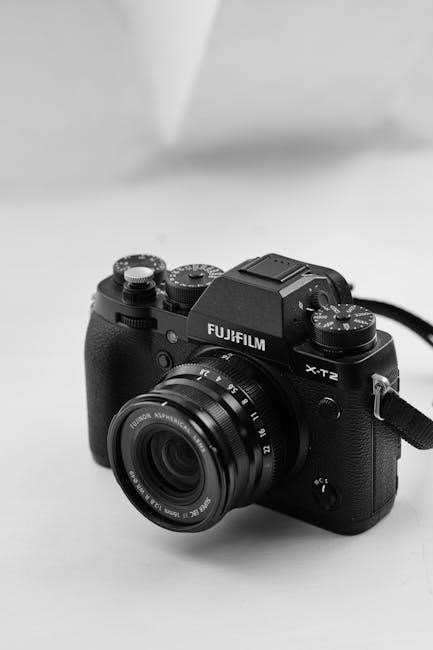Welcome to the Pentax ME Super Manual, your comprehensive guide to mastering this iconic film camera. This manual provides essential instructions, from basic operations to advanced techniques, ensuring optimal use and troubleshooting.
Overview of the Pentax ME Super Camera
The Pentax ME Super is a compact, lightweight 35mm film SLR camera designed for both novice and advanced photographers. Known for its portability and ease of use, it features an aperture-priority auto mode as its primary operating mode, making it user-friendly while still offering manual controls for creative freedom. The camera supports a wide range of Pentax K-mount lenses, allowing versatility in various photographic situations. Its durable construction and intuitive design have made it a favorite among enthusiasts. The manual provides a detailed guide to unlock its full potential, covering basic operations like loading film, setting ISO, and focusing, as well as advanced techniques for metering, exposure control, and accessories. Whether you’re capturing everyday moments or experimenting with artistic photography, the ME Super offers a reliable and flexible tool for achieving exceptional results.
Importance of the Manual for Optimal Camera Use
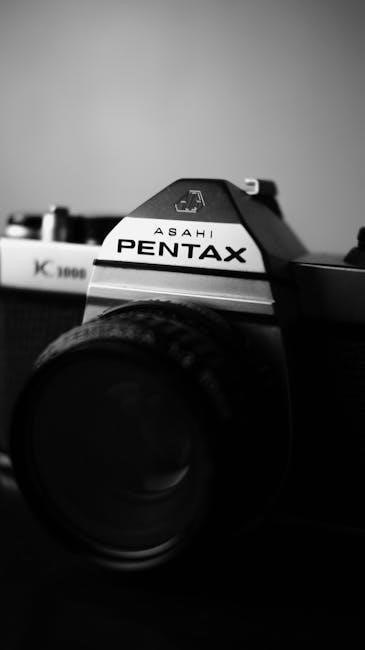
The Pentax ME Super manual is crucial for unlocking the camera’s full potential. It offers detailed instructions for optimal use, covering everything from basic operations to advanced techniques. The manual ensures users understand the camera’s features, allowing them to utilize its capabilities effectively. It provides troubleshooting tips and step-by-step guides, making it an invaluable resource for photographers of all skill levels. Whether you’re new to the ME Super or looking to enhance your photography skills, the manual serves as an essential companion, helping you overcome challenges and achieve the best possible results.
Camera Components and Accessories
The Pentax ME Super features a compact design with key components like the viewfinder, aperture control, and film advance. Accessories include lenses, flashes, and filters, enhancing functionality for diverse photography needs.
Key Features of the Pentax ME Super
The Pentax ME Super is a sleek, user-friendly film camera designed for both novices and enthusiasts. It features an aperture-priority auto mode, manual mode, and a reliable center-weighted metering system. The camera supports a wide range of Pentax K-mount lenses, offering versatility for various photography styles. Its compact design includes a bright viewfinder, film speed settings, and a self-timer. The ME Super also allows for battery operation, enabling consistent performance across different lighting conditions. With its durable build and intuitive controls, this camera remains a favorite among film photographers seeking precision and creativity.
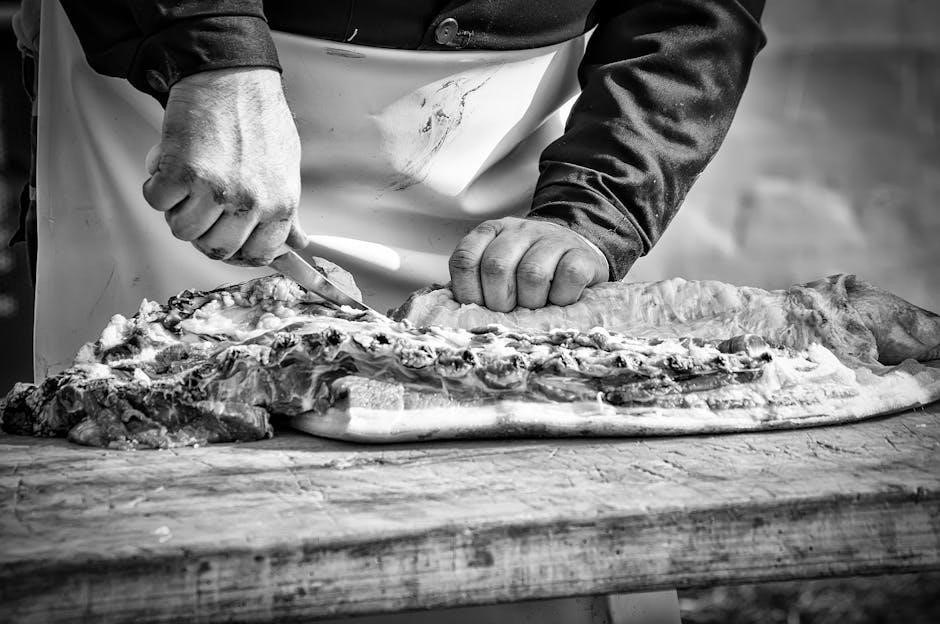
Compatible Lenses and Accessories
The Pentax ME Super is compatible with a wide array of lenses and accessories, enhancing its versatility. It supports the Pentax K-mount system, offering access to an extensive range of lenses, from wide-angle to telephoto, catering to diverse photography needs. Additionally, the camera can be paired with external flashes, providing improved lighting control. Other accessories include lens filters, tripods, and camera cases, which protect and enhance functionality. The ME Super’s compatibility with various K-mount lenses ensures that photographers can experiment with different focal lengths and creative effects, making it a flexible choice for both casual and professional use. This adaptability contributes to the camera’s enduring popularity among film enthusiasts.
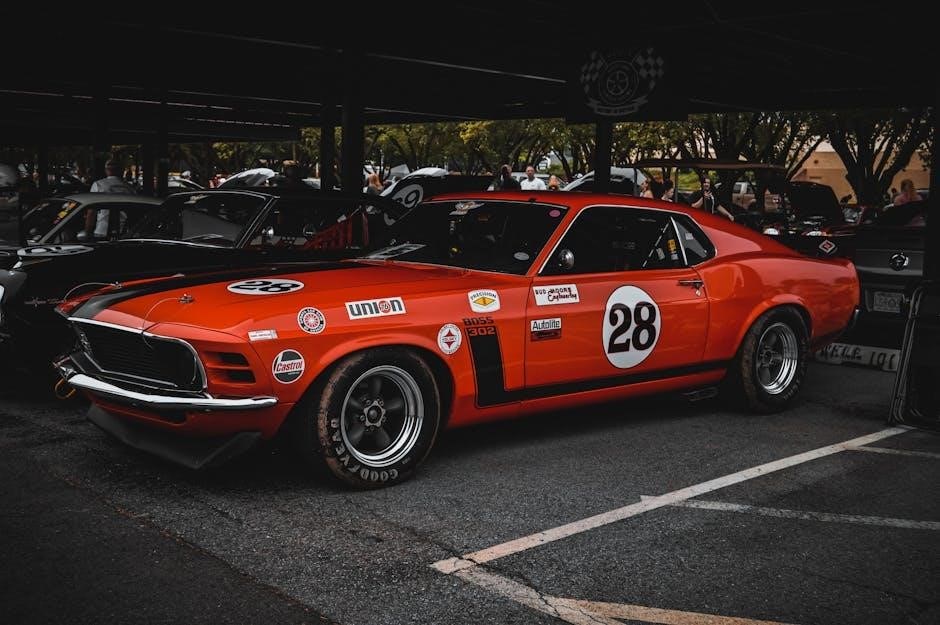
Loading Film and Initial Setup
Loading film and setting up your Pentax ME Super is straightforward. Insert batteries, load film, set the film speed, and adjust the aperture. The manual’s quick course guides you through these steps effectively.
Step-by-Step Guide to Loading Film
Loading film into the Pentax ME Super is a simple process that ensures your camera is ready for use. First, open the camera back by sliding the release latch. Align the film cartridge with the camera’s film chamber, ensuring the film leader is properly seated. Advance the film to the first frame by turning the film advance lever. Set the film counter to match the film speed (ISO) using the dial. Close the camera back and ensure it clicks securely. Finally, check the film counter to confirm it has advanced correctly. This process ensures your camera is ready to capture high-quality images with precise settings.
Setting the Film Speed and ISO
Setting the film speed and ISO on the Pentax ME Super is essential for achieving proper exposure. Locate the ISO dial on the camera’s top plate. To set the film speed, lift the dial and rotate it to align the desired ISO value with the marker. Common ISO settings range from 12 to 3200. Once set, the camera will automatically adjust its metering system to match the film’s sensitivity. Ensure the ISO matches the film loaded in the camera for accurate exposures. After setting, gently press the dial to lock it in place. This step ensures the camera’s light meter provides precise readings, optimizing image quality. Always verify the ISO setting before shooting to avoid under or overexposed photos. The correct ISO setting is crucial for capturing images with the desired brightness and clarity.
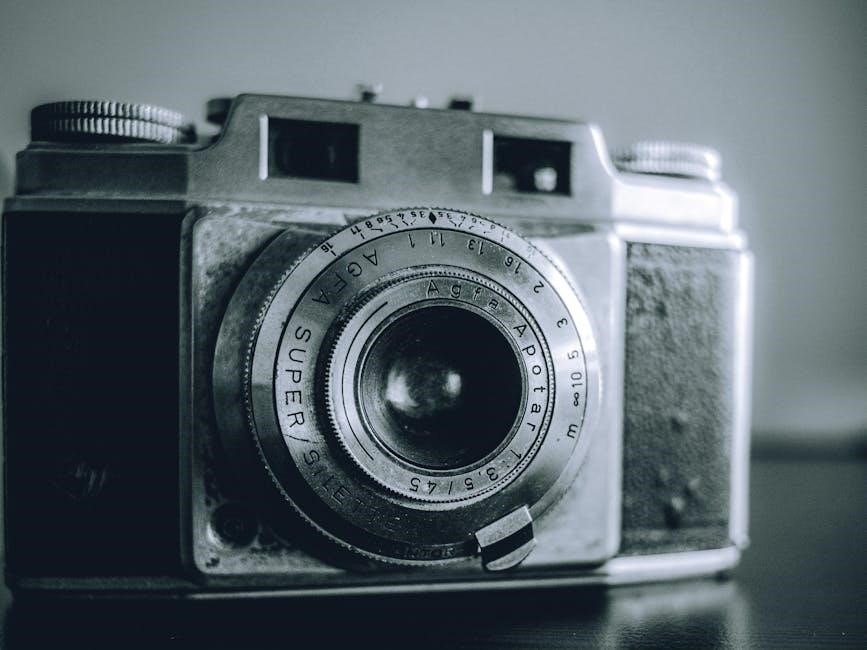
Shooting Modes and Operations
The Pentax ME Super offers versatile shooting modes, including Auto, Manual, and Bulb, providing flexibility for various photography scenarios. Each mode is designed to enhance creative control and precision.
Understanding the Auto Mode
The Auto Mode on the Pentax ME Super is designed for simplicity and ease of use, making it ideal for beginners or quick shooting situations. In this mode, the camera automatically adjusts the aperture and shutter speed to ensure proper exposure, allowing users to focus solely on composition and framing. The ME Super’s Auto Mode is essentially a program mode, where the camera selects the best combination of aperture and shutter speed based on the built-in light meter. This mode is particularly useful for capturing sharp images in changing lighting conditions. However, it offers limited creative control, as manual adjustments to aperture or shutter speed are not possible in this setting. Despite this, the Auto Mode delivers reliable results, making it a great starting point for those new to photography or for situations where time is of the essence.
Manual Mode and Custom Settings
The Manual Mode on the Pentax ME Super offers photographers full creative control over exposure settings. This mode allows users to independently adjust both the aperture and shutter speed, enabling precise control over the exposure. The camera’s aperture range spans from f/1.4 to f/16, while shutter speeds range from 1/1000th of a second to 8 seconds, plus a bulb mode for longer exposures. Custom settings can be fine-tuned to achieve specific effects, such as freezing motion or creating motion blur. The exposure compensation dial provides an additional layer of adjustment, allowing for +/- 2 stops of compensation. This mode is ideal for experienced photographers who want to experiment with lighting and composition. By manually controlling the camera’s settings, users can unlock the full potential of the ME Super, capturing images that reflect their unique vision and style.
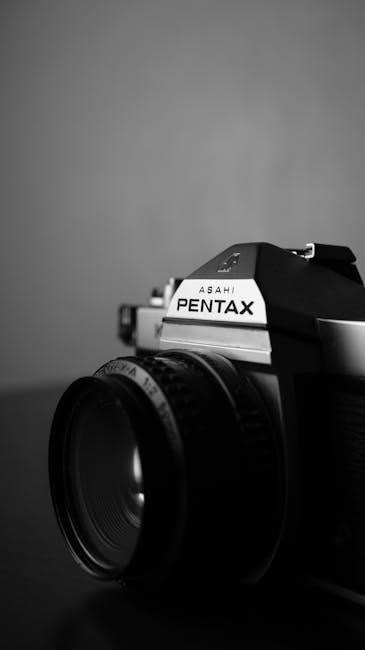
Focusing and Metering
Focusing on the ME Super involves using the viewfinder’s focusing screen for precise adjustments. The camera features a center-weighted metering system, ensuring balanced exposures in diverse lighting conditions.
Using the Viewfinder for Accurate Focus
The Pentax ME Super features a built-in viewfinder designed for precise focusing. To achieve sharp images, align the subject within the viewfinder’s frame. The focus ring on the lens allows manual adjustment. Turn the ring until the subject appears sharp in the viewfinder. For optimal results, ensure the viewfinder is free from obstructions. Proper positioning of the eye is crucial to avoid blocking the lens or light entering the viewfinder. The ME Super’s viewfinder also displays exposure information, aiding in balancing aperture and shutter speed. Use the focus screen’s clarity to judge sharpness accurately. Practice focusing on various subjects to master the technique. This ensures every shot captures the intended detail and clarity, making the ME Super a reliable tool for photographers seeking precision and control over their imaging process.
Center-Weighted Metering System
Center-Weight

Exposure Control
Exposure control on the Pentax ME Super allows precise adjustments to aperture, shutter speed, and ISO, ensuring optimal balance for desired lighting effects in various photography conditions.
Adjusting Aperture for Different Effects
The aperture on the Pentax ME Super plays a crucial role in controlling exposure and depth of field. Located on the lens, the aperture is adjusted using a ring, allowing you to select f-stops ranging from wide (like f/1.4) to narrow (like f/16 or higher). A larger aperture (smaller f-stop number) lets more light in, creating a shallower depth of field, which is ideal for isolating subjects in portraits or close-ups. Conversely, a smaller aperture (larger f-stop number) provides a deeper depth of field, keeping more of the image in focus, making it perfect for landscapes or group shots. Proper aperture adjustment ensures balanced exposure while achieving the desired aesthetic effects. Experimenting with different f-stops helps photographers master the art of lighting and composition, making the Pentax ME Super versatile for various creative needs.
Understanding Shutter Speed Settings
Shutter speed on the Pentax ME Super is a fundamental aspect of photography, controlling the length of time the camera’s shutter remains open. Measured in seconds or fractions of a second, shutter speed significantly impacts the look and feel of your images. Faster shutter speeds (e.g., 1/1000th of a second) are ideal for freezing fast-moving subjects, such as in sports or wildlife photography, while slower speeds (e.g., 1 second or longer) create motion blur, adding a dynamic effect to moving objects like waterfalls or vehicles. The ME Super offers a range of shutter speeds, from 1/1000th of a second down to 4 seconds, plus a Bulb mode for extended exposures. Mastering shutter speed allows photographers to capture sharp images, convey motion, or achieve creative effects, making it a versatile tool for various shooting scenarios. Experimenting with different speeds helps photographers achieve their desired visual outcomes.
Balancing ISO for Optimal Exposure
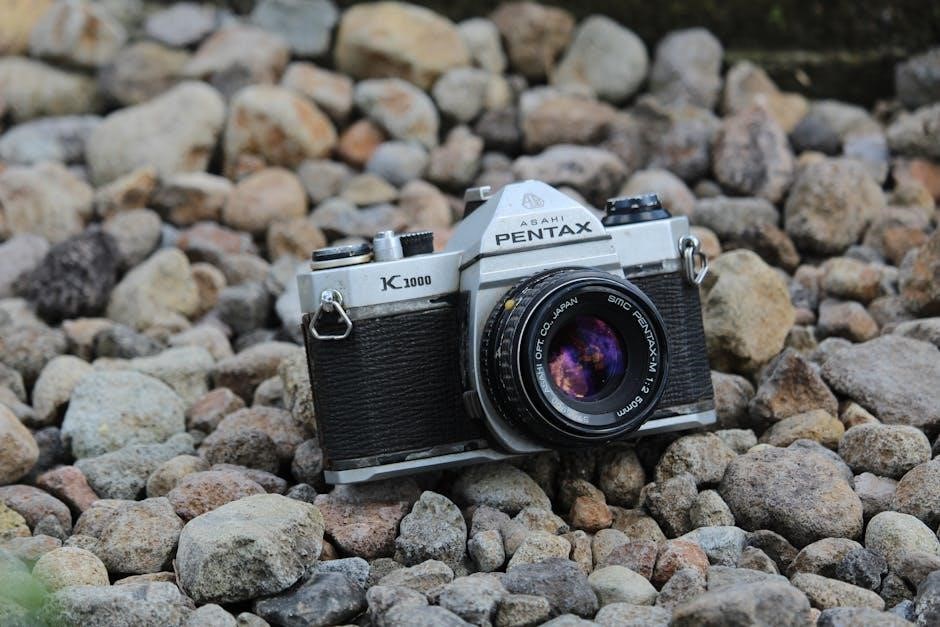
ISO settings on the Pentax ME Super play a crucial role in achieving optimal exposure. ISO, or International Organization for Standardization, refers to the camera’s sensitivity to light. Lower ISO values (e.g., 100 or 200) are best for bright lighting conditions, producing sharp, noise-free images. Higher ISOs (e.g., 1600 or 3200) are ideal for low-light situations but may introduce grain or noise. The ME Super allows manual ISO adjustment, giving photographers control over image quality and exposure. When setting the ISO, consider the lighting conditions and the desired effect. A lower ISO ensures minimal noise, while a higher ISO captures images in dim light but risks sacrificing detail. Balancing ISO with aperture and shutter speed is key to achieving well-exposed photographs. Experimenting with ISO settings helps photographers master their craft and adapt to various shooting environments effectively. Proper ISO use enhances creativity and ensures optimal results.
Accessories and Additional Features
The Pentax ME Super supports various accessories, including K-mount lenses, external flash units, remote shutter releases, and tripods. Lens filters and cases are also available to enhance functionality and protection.
Using Flash and External Lighting
The Pentax ME Super supports external flash units, enhancing low-light photography. Compatible flashes, such as the Pentax AF-200FG or Metz units, can be mounted on the camera’s hot shoe. To use flash, set the shutter speed to the X-sync speed of 1/125s. In Auto mode, the flash automatically calculates exposure based on the ISO and aperture. For manual control, adjust the flash intensity to suit the scene. External lighting, such as studio strobes or continuous lights, can also be used for creative effects. Ensure the flash is synchronized with the camera’s settings to avoid overexposure. Experiment with angles and diffusers to achieve professional-grade results. Always test lighting setups before shooting to ensure optimal exposure. Proper use of flash and external lighting can elevate your photography, making the Pentax ME Super versatile for various conditions.
Filters and Other Lens Attachments
The Pentax ME Super supports a variety of filters and lens attachments to enhance creativity and protect your equipment. Common filters include UV, polarizing, and color graduated filters, which can reduce glare, enhance colors, or protect the lens. Most lenses for the ME Super use a 49mm filter size, ensuring compatibility with a wide range of aftermarket options. To attach a filter, simply screw it onto the lens thread. Other attachments, such as lens hoods, help prevent lens flare and protect against accidental damage. Close-up adapters or extension tubes can also be used for macro photography. When using filters, adjust exposure settings as needed, as some filters can affect light transmission. Experiment with different combinations to achieve unique effects and improve image quality. Proper use of filters and attachments can significantly expand the camera’s versatility for various shooting scenarios.

Maintenance and Troubleshooting
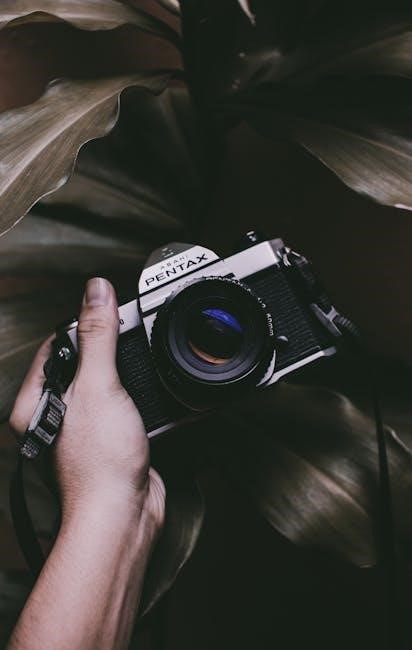
Regular cleaning of the camera and lenses ensures optimal performance. Troubleshoot issues like shutter malfunctions or light leaks by checking battery health and ensuring proper film loading.
Cleaning the Camera and Lenses
Regularly clean the Pentax ME Super to maintain its performance and longevity. Use a soft, dry cloth to wipe the camera body and external surfaces. For the lenses, apply a microfiber cloth dampened with lens cleaning solution, avoiding harsh chemicals. Gently remove smudges or fingerprints in circular motions. Clean the viewfinder with a dry microfiber cloth to ensure clear visibility. For the mirror and sensor, use compressed air to remove dust particles. Avoid touching lens surfaces, as oils from skin can damage coatings. If fungus or moisture is present, seek professional assistance. Store the camera in a dry environment to prevent mold growth. Regular cleaning prevents damage and ensures sharp, clear images. Always handle the camera with care to maintain its optical and mechanical integrity.
Common Issues and Solutions
When using the Pentax ME Super, several common issues may arise, but most can be easily resolved with proper troubleshooting.
Film Not Advancing Properly: If the film does not advance, check that it is loaded correctly. Ensure the film is properly seated on the spool and aligns with the guide. Gently wind the film lever to advance it.
Shutter Not Firing: A non-firing shutter could indicate low battery power. Replace the battery with a fresh one and test the shutter release. If the issue persists, ensure the battery contacts are clean.
Blurred Images: Blurred photos may result from improper focusing or camera shake. Always use the viewfinder for accurate focus and maintain a steady hand or use a tripod for stability.
Dirt or Dust on Lens/Mirror: Clean the lens and mirror regularly using a soft cloth or compressed air. Avoid touching these surfaces to prevent smudges or damage;
Exposure Issues: Incorrect ISO settings can lead to overexposed or underexposed photos. Ensure the ISO matches the film speed for optimal results.
Metering Inaccuracies: In challenging lighting conditions, the light meter may not provide perfect readings. Adjust settings manually or use exposure compensation for better results.
By addressing these common issues, users can ensure their Pentax ME Super operates smoothly and delivers high-quality photos. Regular maintenance and proper handling are key to extending the camera’s lifespan and performance.
User Experience and Tips
The Pentax ME Super offers a portable, ergonomic design, making it ideal for photographers seeking a balance between simplicity and creativity. Experiment with various lenses and master manual mode for stunning results.
Best Practices for Using the ME Super
For optimal results with the Pentax ME Super, always handle the camera with care, as its mechanical components are precise and sensitive. Regularly clean the viewfinder and lenses to ensure clarity and prevent scratches. When loading film, do so in low-light conditions to avoid exposure. Familiarize yourself with the aperture, shutter speed, and ISO settings to master manual control. Experiment with different lenses to explore creative possibilities. Use a tripod for stability in low-light situations and to minimize camera shake. Keep the camera stored in a dry, cool place to prevent moisture damage. Practice using the metering system to achieve balanced exposures. Lastly, take advantage of the camera’s portability by carrying it everywhere to capture spontaneous moments. These practices will enhance your photography experience and ensure longevity for your ME Super.
Advanced Techniques for Better Photography
To elevate your photography with the Pentax ME Super, explore advanced techniques that maximize its capabilities. Experiment with depth of field by adjusting the aperture to isolate subjects or capture landscapes with sharp focus. Use the camera’s manual mode to override the meter and create intentional overexposures or silhouettes. Bracket your shots by adjusting shutter speeds to capture a range of exposures, later merging them for HDR-like effects. Practice panning to blur backgrounds while keeping moving subjects sharp. Leverage the ME Super’s ISO range by using faster films in low light or slower films for fine grain in bright conditions. Try multiple exposures by not advancing the film between shots for creative layering. Lastly, experiment with prime lenses to achieve unique perspectives and shallow depth of field. These techniques will help you push the boundaries of film photography and unlock the ME Super’s full creative potential.
The Pentax ME Super manual empowers photographers to master its features, ensuring creative control and stunning results. With proper understanding and practice, users can unlock its full potential effortlessly.
Final Thoughts on the Pentax ME Super Manual
The Pentax ME Super manual is an indispensable guide for photographers seeking to maximize their camera’s potential. It provides a comprehensive understanding of the camera’s features, from aperture and shutter speed to ISO settings, ensuring users can capture stunning images with precision. Whether you’re a novice or an experienced photographer, the manual offers clear, step-by-step instructions to help you master the ME Super’s capabilities. Its portability and durability make it a reliable companion for any photography adventure. By following the manual’s guidelines, you can unlock the full creative potential of the Pentax ME Super, experimenting with different techniques to achieve unique results. This manual is a testament to the camera’s timeless appeal, making it a valuable resource for anyone aiming to enhance their photography skills.
